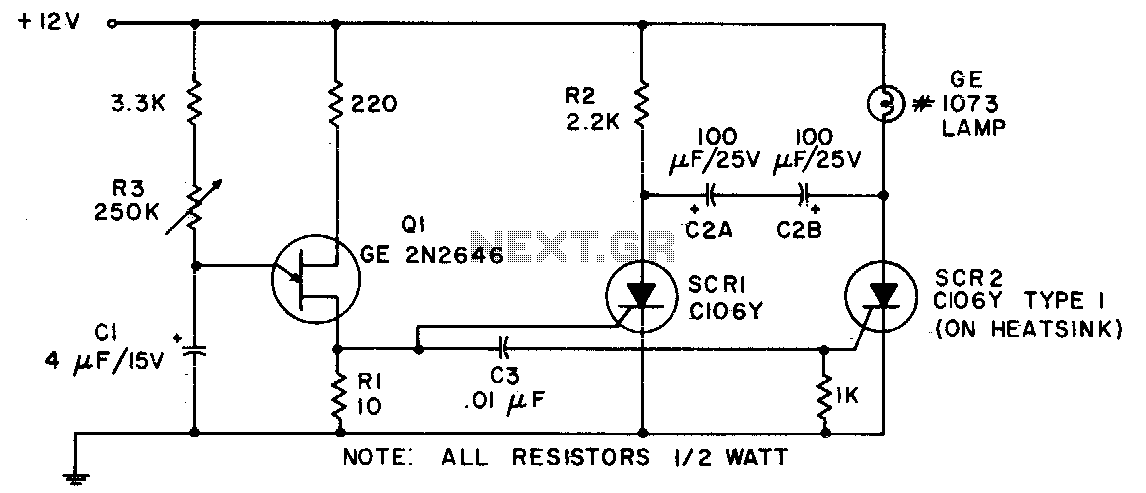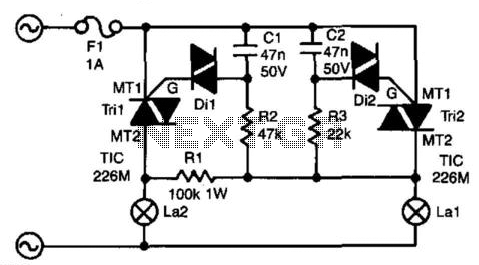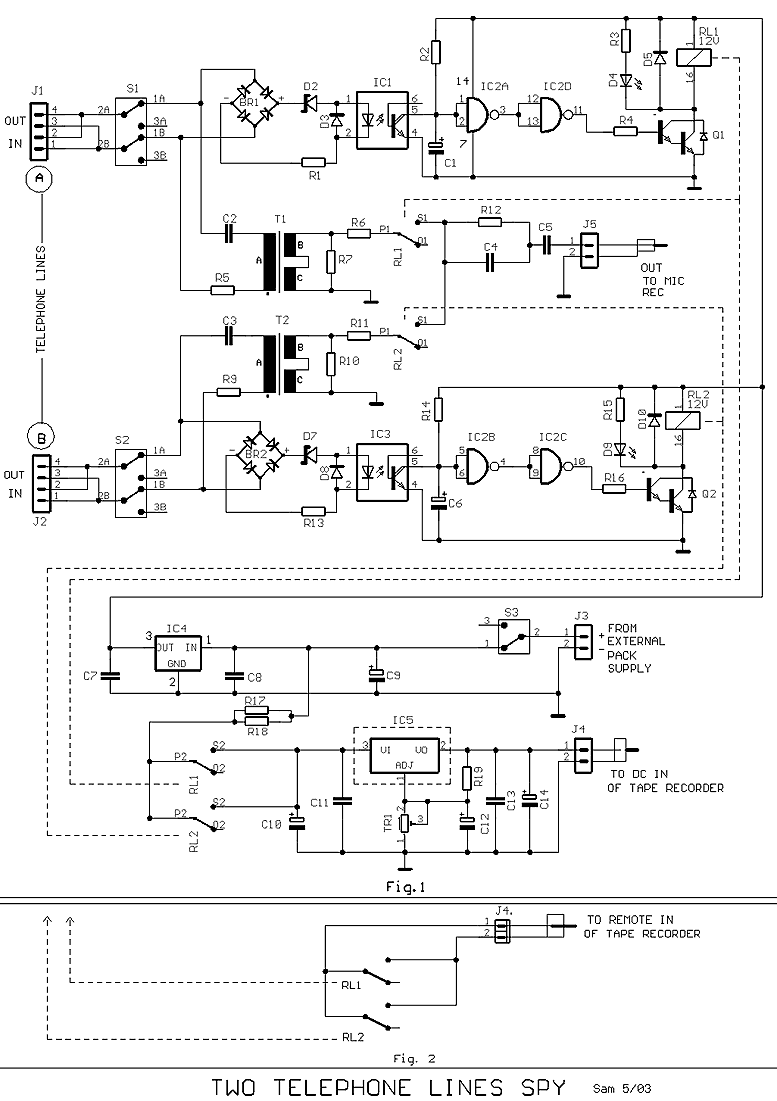
Auto boat or barricade flasher

Due to its capability to handle heavy inrush currents, this incandescent lamp flasher utilizes the C106 SCR. The components illustrated allow for the flash rate to be adjusted by potentiometer R3, ranging from 36 flashes per minute to 160 flashes per minute.
The incandescent lamp flasher circuit is designed to provide a variable flashing output using a silicon-controlled rectifier (SCR), specifically the C106 model. This component is essential for managing the high inrush currents that occur when the lamp is initially energized. The C106 SCR operates by allowing current to flow through it when triggered, and it remains conducting until the current drops below a certain threshold, making it ideal for applications requiring robust switching capabilities.
The circuit configuration typically includes a resistive-capacitive (RC) timing network that determines the flash rate of the lamp. The potentiometer R3 plays a crucial role in this network, as it allows for the adjustment of the time constant of the circuit. By varying the resistance, the charge and discharge times of the capacitor can be altered, directly affecting the frequency of the flashing output.
In practice, the flash rate adjustment can be observed through the lamp's brightness and the frequency of the on-off cycling. The range of 36 to 160 flashes per minute provides versatility for different applications, such as decorative lighting or signaling devices. Additional components in the circuit may include diodes for flyback protection, resistors for current limiting, and capacitors for filtering to ensure stable operation.
Overall, this incandescent lamp flasher circuit exemplifies a practical application of SCR technology in controlling lighting effects, with adjustable parameters to suit specific user requirements.Because of its ability to withstand the heavy inrush currents, this incandescent lamp flasher uses the C106 SCR With the components shown, the flash rate is adjustable by potentiometer R3 within the range of 36 flashes per minute to 160 flashes per minute. 🔗 External reference
The incandescent lamp flasher circuit is designed to provide a variable flashing output using a silicon-controlled rectifier (SCR), specifically the C106 model. This component is essential for managing the high inrush currents that occur when the lamp is initially energized. The C106 SCR operates by allowing current to flow through it when triggered, and it remains conducting until the current drops below a certain threshold, making it ideal for applications requiring robust switching capabilities.
The circuit configuration typically includes a resistive-capacitive (RC) timing network that determines the flash rate of the lamp. The potentiometer R3 plays a crucial role in this network, as it allows for the adjustment of the time constant of the circuit. By varying the resistance, the charge and discharge times of the capacitor can be altered, directly affecting the frequency of the flashing output.
In practice, the flash rate adjustment can be observed through the lamp's brightness and the frequency of the on-off cycling. The range of 36 to 160 flashes per minute provides versatility for different applications, such as decorative lighting or signaling devices. Additional components in the circuit may include diodes for flyback protection, resistors for current limiting, and capacitors for filtering to ensure stable operation.
Overall, this incandescent lamp flasher circuit exemplifies a practical application of SCR technology in controlling lighting effects, with adjustable parameters to suit specific user requirements.Because of its ability to withstand the heavy inrush currents, this incandescent lamp flasher uses the C106 SCR With the components shown, the flash rate is adjustable by potentiometer R3 within the range of 36 flashes per minute to 160 flashes per minute. 🔗 External reference
Warning: include(partials/cookie-banner.php): Failed to open stream: Permission denied in /var/www/html/nextgr/view-circuit.php on line 713
Warning: include(): Failed opening 'partials/cookie-banner.php' for inclusion (include_path='.:/usr/share/php') in /var/www/html/nextgr/view-circuit.php on line 713





